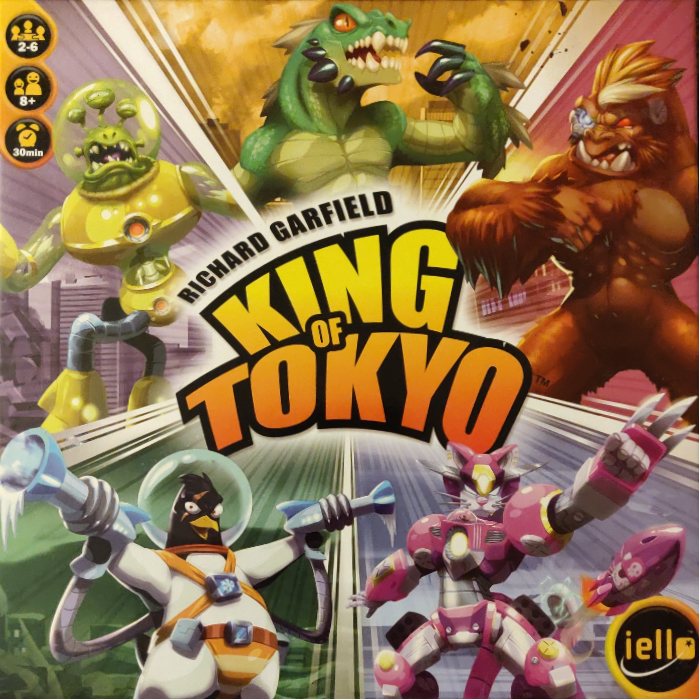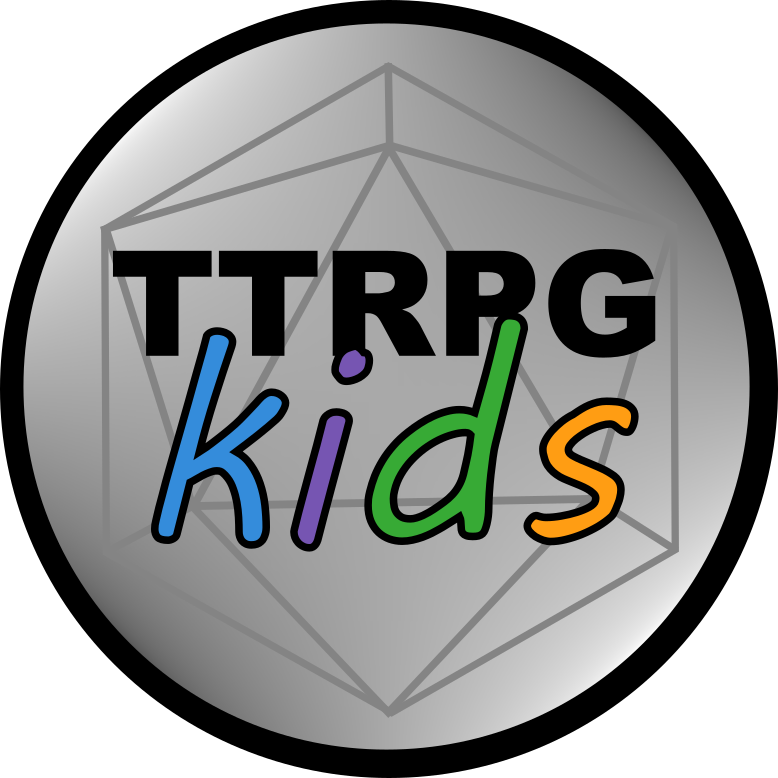Tips and Tricks for turning your kid’s board games in tabletop RPG time!
Jump to:
- Why introduce RP to kid’s board games?
- Games for little kids (3-7)
- Games for older kids (8+) and grown ups
- Other fun suggestions
Why introduce role-playing to kid’s board games?
I have another article here that goes into more way more depth, but in short, RP has a ton of benefits for kids ranging from increased self confidence to practicing social skills to bonding with fellow players and parents.
You can also use RP to turn games that start to grind on you (for me, this is Candy Land) or get heated (*cough* Monopoly) into something a little more funny and chill.
Starting with board games too also lets you build off of something from your comfort zone. If you haven’t played a lot of TTRPG’s prior to introducing them to your kid, it can be a more gradual first step since you and your child are already familiar with the boardgame’s mechanics.
Board games are also incredibly easy to find in stores if you prefer to shop in-person and have a hard copy of the game (there are a ton of hardcopy TTRPG’s, but also a ton that are digital only).
Games that can convert TTPRG time for little kids (3-7)
There are lots of games for little kids that this can work for (so this list below is definitely not exclusive), but I focus on a few classics that I remembered from my childhood or have played with my kid (3yo). Below are my suggestions for introducing some RP elements to each game!
Candy Land

My kid LOVED Candy Land for a couple months, which was great for teaching colors and the idea of a rules system, but I was having trouble sitting through so many of the same game. So… I started asking questions and making stories about what the character did when they got sent to a special square.
For example, when the kiddo would get sent back to the peanut brittle house, which can be pretty disappointing to a kid about to get to the end, we made up a story about it. I would talk in a funny accent for the peanut brittle lady and call my kid’s gingerbread person over so he could deliver peanut brittle to the licorice guy so he wouldn’t be such a grump. It made the game into a mission then and not just a grind through the deck of cards.
Chutes and Ladders
Chutes and Ladders has lots of little “plot hooks” in the pictures on the board that can very easily be turned into both RP AND learning about safety and social responsibility skills. This one was probably the easiest to turn into an RP game.
When something would happen, say the kid pulls the cat’s tail, we would talk about why that hurts the cat. On the flip side, if you get the cat out of the tree, why does it help the cat? How did the cat get up there in the first place?
You can also play it where if your child gives an alternative response to the “chutes”, like they immediately say, “NO COLORING ON THE WALLS! That’s naughty” then they don’t have to go down the chute. This reinforces and incentivises your child learning what not to do more than just having their character get punished.
Sorry!
Sorry! may not look like there’s a lot of RP potential, but you can definitely incorporate it with some imagination.
Instead of thinking of the pegs like just pegs, maybe they are race cars zooming around a track and trying to bump each other back to the start! The slide squares are hills that you can drift down and you can act out racing around the corners… and also maybe tease a bit “I’m catching up! Here I come!”
It amps up the excitement a bit and gets your kid imagining past what the pieces on the board simply look like and into framing it towards a story with a little more creativity.
Mouse Trap
My siblings and I loved Mouse Trap. Getting to build a wild contraption was a lot of fun, but… you also play as the mouse while you build, and we would forget this sometimes. For kids who like stories about animals, playing as the mouse trying to outrun the strange invention can be a lot of fun, similar to when playing No Mice, No Meowsters as a cat.
When something surprising happens, you can ask, what does your mouse do!? Maybe they squeak and try to run away (even if they stay in the same place on the board). When they see the cheese, ask what it smells like… does the mouse REALLY REALLY REALLY want the cheese? Have your child describe how the mouse tries to sneak in to nab the cheese from under the net.
Games that can convert to TTRPG time for older kids (8+) and grown ups
As with above, this list is not exclusive – there are so many games this method can work with! However, here are some classics that I remember having fun RP’ing OR that were recommended to me by Josie, DM of Short Rest, Long Quest podcast on twitter who played these games with her brother!
Takenoko
Takenoko is a very cute game that Josie recommended and is all about being a panda who is growing and eating bamboo! It uses tiles that look pretty similar to Settlers of Cataan and allows you to strategize about growing your garden and coping with weather!
When that weather hits, ask what happens! What was the weather like? What did your panda do? In TTRPG’s, you run into random situations that the players don’t always have total control over, and this can help kids practice RP’ing through those sometimes troublesome situations.
The Game of Life
My siblings and I also played a lot of The Game of Life, both in board game format and in a digital version, primarily because of the funny animations (yay 90’s computer board games). Those funny animations though, that kicked off some RP!
Sometimes you get the lowest cost house but also roll up doctor for your career and have no kids – ask: what is the story behind that? Other times, you play a struggling musician with 4 kids living in a mansion you can’t afford – ask: did they inherit it and now can’t pay for it? Are they trying to live the rockstar life? This helps kids practice building a backstory off of minimal prompts and exercise those creative muscles.
King of Tokyo

One of the inspirations for this article was a comment that Josie Haertzen made on twitter about introducing RP elements into King of Tokyo during a birthday party!
She let kids act out being the monster and pretend to do the actions on the card as if they were their monsters. They got to practice RP and pretend to have some awesome fun with being a powerful creature spreading their reign over the city!!!
First, that sounds like a ton of fun and like an amazing birthday party, but second, this also helps give kids confidence in RP. Doing silly over-the-top acting breaks through some of the shyness barriers and lets shyer kids see that RP is a lot of fun.
Clue
When my siblings and I first would play Clue, we did it from a mechanics standpoint, but it was still a really fun game. We played it so many times we even started being able to tell who had what from across the table just by how people were asking, so we had to start faking out our questions.

Eventually though, I remember a few games where we started getting into character, and it was way more fun! Imagine questioning everyone in whatever voice you associate with Col Mustard instead of your own. Or you play the whole game as if you were a snooty Mrs. Peacock. It is a pretty easy jump to start doing voices while playing Clue, and it can definitely help kids get more comfortable with RP before trying it out with a character they make in a TTRPG setting.
Coup and Sheriff of Nottingham
Both Coup and Sherrif of Nottingham are bluffing games (also recommended by Josie) that lean heavily into structured RP and strategizing. Your character has roles and motives that you need to play out, in addition to being smart about using their mechanics.
Having a set of motivations, even if they are assigned, sets up the idea of creating motivations for your own character later in a more free-form TTRPG. It also lets kids practice negotiation skills and strategy that are critical in a lot of RP focused TTRPG’s (versus maybe combat focused TTRPG’s).
Betrayal at the House on the Hill
Another recommendation from Josie was Betrayal at the House on the Hill. This is also one that, when I was doing monthly board game parties long before having my kid, we would bust out almost every time.
In Betrayal, everyone plays a different character with different stats and is uncovering rooms and secrets within a creepy house. Eventually, a haunt is triggered! Then, either the players are all working together towards trying to escape the house OR one of the explorers is corrupted and is now trying to take out everyone else!
Between the stats, the story elements, and the way the characters are described with some backstory, I think Betrayal is more of a short TTRPG than a board game… but still it feels like a board game. Where I think this is great is when kids (or adults) maybe don’t want to start on D&D or Pathfinder (maybe they think it is intimidating or nerdy), Betrayal is kind of a “cool” game that feels more familiar than some other TTRPG’s and introduces all the core TTRPG elements (RP, mechanics, exploration, fighting, etc) that most people expect.
Other fun suggestions for turning board games into TTRPG time
While playing RP-ified board games with kids, there’s a few other fun elements you can introduce to make them special!
Keep a notebook of your kid’s role-playing stories
Josie would write down her brother’s stories in a notebook so he’d have them for later in life. This is an awesome keepsake, and I can only imagine reading back into the stories from the mind of a little kid would be a fun nostalgia trip. She would also use this notebook to explain how stories were written down and became the books we read – as Josie puts it, it allowed, “drawing associations between stories and play, and by extension writing and play”.
Introduce role-playing after the game
I also will encourage my kid (3yo) to make up stories about the game characters after we play. Sometimes, combining mechanics and RP can be stressful if your toddler is having a moment, so it’s OK to separate the RP a bit. We would play Candy Land, then I would ask what he’d do at the castle at the end? Where did the other characters go? Often times, he would start telling a story (sometimes for 30+ minutes) about everything they do after the game.
Reward role-playing, even if it bends the rules
Like when I discussed during the Chutes and Ladders section, I would sometimes bend the rules to reinforce a point by letting my kid skip the chute if he knew what SHOULD have been done (i.e. don’t pull the cat’s tail because it hurts the cat). You can do this for good RP too, just like how DM’s give advantage on rolls during TTRPG’s for good RP.
Maybe a player has a nice conversation with the candy cane guy in Candy Land – let them pick an extra card. Maybe your kid came up with a really cool story for why their character is a doctor living in a trailer during the Game of Life – let them respin something later in the game. If you are trying to reinforce RP or another concept with the game, it is OK to “homebrew” your board game rules a bit in order to help get that point to stick and give a nice reward to your players.
Please let me know if this helps and if you use any of the tips here! Or let me know if you have tried something similar and have your own stories!
Also, thank you Josie SO MUCH for your input on this! Being able to write more about games for older kids is something I really want to do with the site, and your experience is greatly appreciated!!

If you liked this post, make sure to subscribe to the TTRPGkids monthly newsletter to stay up to date on the latest reviews, tips and tricks, game and podcast list updates, and more! Thank you for playing tabletop RPGs with your kids and sharing this awesome hobby with the next generation!


Thanks for writing the article
You’ve been very helpful to me. Thank you!